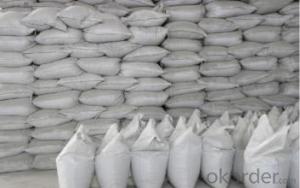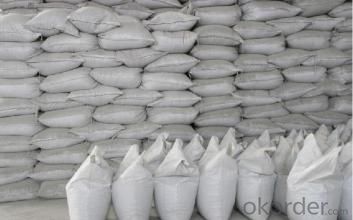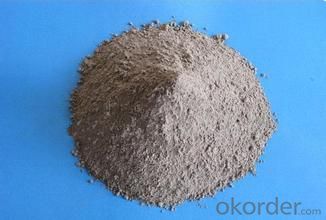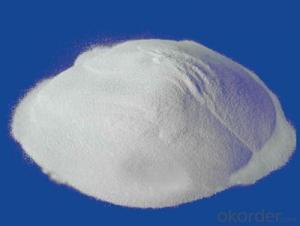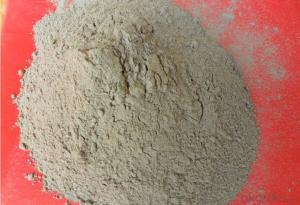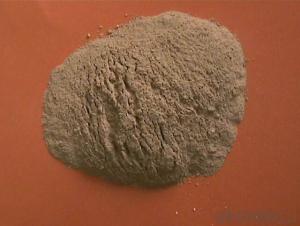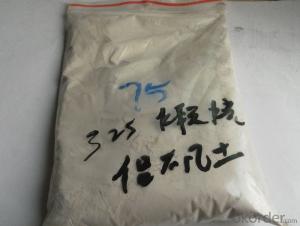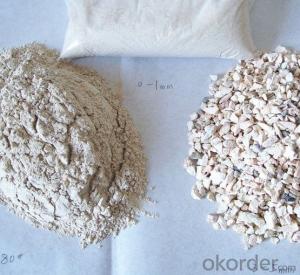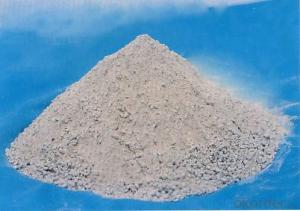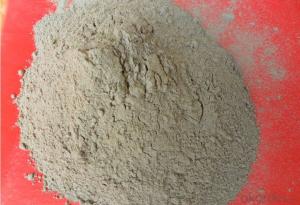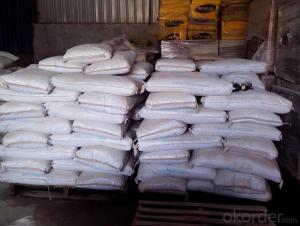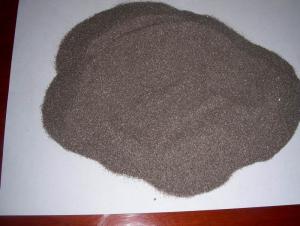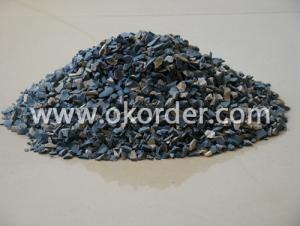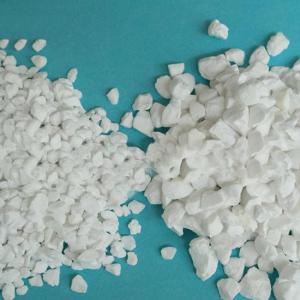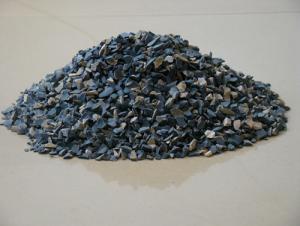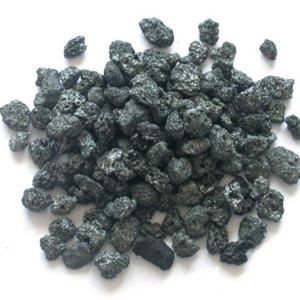Raw Materials for Refractory - Fire Resistance High Temperature High Alumina Castable Cement Refractory Cement
- Loading Port:
- China main port
- Payment Terms:
- TT OR LC
- Min Order Qty:
- 25 m.t.
- Supply Capability:
- 2000 m.t./month
OKorder Service Pledge
OKorder Financial Service
You Might Also Like
Fire resistance high temperature high alumina castable cement refractory cement
Packaging & Shipping
Packaging details: wooden box or others depending on the shipping or your requirments
Product Description
Description of alumina cement
Refractory cement is a kind of the refractory material use high quality corundum, alumina magnesia spinel and fused magnetite as raw materials, this refractory mate-
rial is characterized of resistance of high temperature, resistance of erode and
emersion, long life used. What's more, it can be made difference kinds of ladle as your request
Physical and chemical index of alumina cement
Ordinary refractory cement CA50
Product Performance | CA50-1 | CA50-2 | CA50-3 | |
mineral phase composition | main crystal phase | CA | ||
secondary crystal phase | CA2,C12A7, CT, C2AS | |||
specific surface area(m2/kg) | ≥300 | |||
condensation (minute) | preliminary condensation | ≥30 | ||
final condensation | ≤360 | |||
bending strength (Mpa) | 24hours | 5.5 | 6 | 6.5 |
72 hours | 6.5 | 7 | 7.5 | |
compressive strength (Mpa) | 24 hours | 40 | 45 | 50 |
72 hours | 50 | 55 | 60 | |
application | used as binder to make traditional unshaped refractory material (concrete, refractory gunning material, etc)
| |||
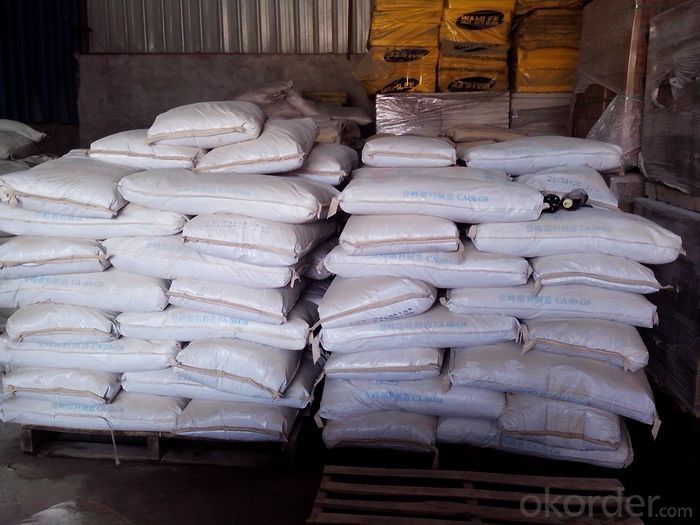
- Q: How to use fire-resistant soil?
- It can live with water, not too sticky. Don't be too thin. It's best to put the stove in the inner wall.
- Q: What a blast furnace refractories generally?
- Common refractories often use silica?brick, semi-silica brick, fireclay brick, high alumina brick, magnesia brick, etc. special materials often used are AZS brick, corundum brick, directly bonded magnesia-chrome brick, carborundum brick, silicon nitride bonded silicon carbide bricks, nitrides, silicides, sulfides, borides, carbides and other non-oxide refractory materials; calcium oxide, chromium oxide, aluminum oxide, magnesium oxide, beryllium oxide refractory insulating refractory frequently used. material diatomite products, asbestos products, insulation boards. monolithic refractories have fettling frequently used, refractory ramming mixes, refractory castable, fire-resistant plastic, refractory clay, refractory gunning refractory projection material, refractory coatings, lightweight refractory castable, stemming etc.
- Q: What refractories have good mechanical property resistance and heat expansion and cold contraction property?
- Aluminium oxide ceramics. I would like to know that what kinds of refractory materials can combine together and what kind of masonry way can be used for these materials so as to achieve the perfect combination.
- Q: Which industry does the metallurgy and thermal insulating and refractory material belong to?
- According to "New Economic Industrial Classification", the metallurgy and the thermal insulation refractory matter belong to C category. The manufacturing industry has 30 categories. The non-metallic mineral products industry has 303 classes. The production of building materials of tiles, stones, ect. refers to clay, ceramic tile production, building stone processing, building materials produced by wastes or drogs and subcategories 3035 produced by other building materials. The manufacture of thermal and acoustic insulation materials refers to the manufactuer of mineral insulation materials and other products, like rock wool, mineral?cotton, expanded perlite and expanded vermiculite used for thermal insulation and sound insulation, but it does not include the production of 3039 subcategories, like asbestos thermal insulation and sound insulation materials, and other construction materials.
- Q: Is the linear change on reheating the same as heating permanent linear change of refractory material?
- “+”represents expansion. the afterexpansion and aftercontraction after cooled to be at room temperature. The change may significantly damage the masonry of thermal kiln. There are regulations on the linear change on reheating of common refractory material in the national standard. Some physical chemical changes may continue. It is defined as the change from being heated to the specified temperature of refractory material sample. Heat preserving for a while till afte cooling to be at room temperature, then the residual will expand or contract in its length, heat preservation for a while, organization vitrification, the irreversible changes of its length refers to heating the firing refractory to be at high temperature, so as to make the volume of refractory materials expand or contract, due to the influence of uneven temperature or lack of time, otherwise it will cause the deformation of the refractory ball and make this indicator within standard even reach smaller value, so firing control must be strengthened in product production. But it is should not be too high. For refractory materials with same chemical composition, the linear change on reheating is produced in the heating process. Properly increasing sintering temperature and prolonging the holding time is an effective process measures, make its firing inadequate. When subjected to high temperature, it can reduce the thermal shock resistance. Minus sign "-" represents contraction. The permanent line rate refers to heating the fire refractory ball to the specified temperature. Linear change on reheating, also known as residual linear change, is an important indicator to assess the quality of refractory in the long time use. To control the permanent line rate within the standard or reach the minimum value.
- Q: Who knows about the differences between 3M fireproofing materials and ShiLiDe materials?
- Advertising materials can be divided into fireproofing and non-fireproofing ones which can not tell the differences with naked eyes. You can ask 3M to provide test reports or go to a the third party test organization SGS to do flame retardant test, maybe I can help you. Mineral wool board is harmful to human body, will lead to chronic poisoning, the quality of it is bad! You must pay attention to it! It can not be used in chemical and pharmaceutical plants.
- Q: How to deiron refractory?
- It cannot be done in conventional approaches, because you are referring to refractories. If using acid liquor soaking method to deiron, the material itself will be also damaged! If just for reducing the corrosion of materials, it will be OK to add a corrosion-resistant and fireproof protection layer.
- Q: What is the type of heat resistance property of high temperature electric furnace ?
- According to the levels of refractoriness : Common refractories: & Gt: 1580 ℃ ~ 1770 ℃ advanced refractories: 1770 ℃ ~ 2000 ℃ AAA refractories; 2000 ℃
- Q: What are the types of refractory sealant?
- 1. The characters of sealant for construction According to the characters, sealant for buildings are classified into caulk, sealants and construction sealant in China; They are named in accordance with the function and different basepolymeters. In the relevant standard for products,
- Q: The manufacturing technique of refractory material
- Melt blowing method is to melt the ingredients first, In addition, hiphotos, organic impurities, to be mixed, add sulfite pulp waste liquid into magnesia billet , ensure the accuracy of the product dimension. The products are mainly used for light refractory. then dry and fire with sintering to reduce the firing shrinkage of products, making it disperse into fiber or hollow sphere. The porpose of pre sintering raw material is to Sintering method is pre-sintering part of the raw material into clinker. such as adding binding clay into aluminum silicate blank
Send your message to us
Raw Materials for Refractory - Fire Resistance High Temperature High Alumina Castable Cement Refractory Cement
- Loading Port:
- China main port
- Payment Terms:
- TT OR LC
- Min Order Qty:
- 25 m.t.
- Supply Capability:
- 2000 m.t./month
OKorder Service Pledge
OKorder Financial Service
Similar products
Hot products
Hot Searches
Related keywords
